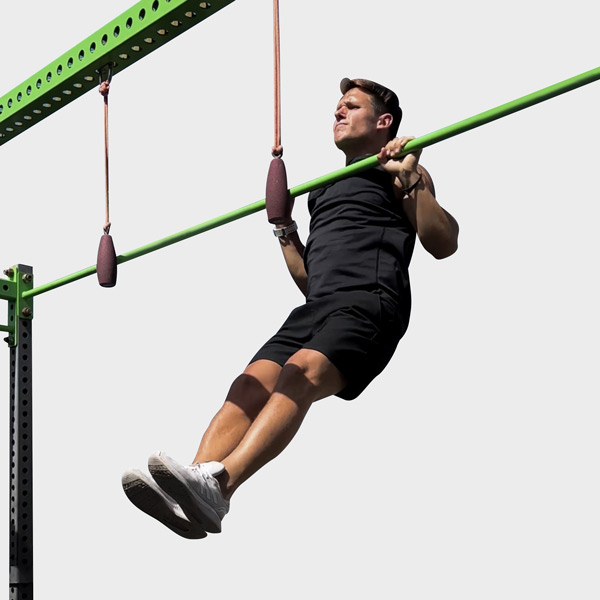Pull-Up
 Auto Detected
Auto DetectedBodyweight vertical pull on a bar that targets lats and biceps to build upper body strength and endurance; commonly progressed with assistance or added weight.
About Exercise
Equipment
Pull-up Bar
Difficulty
3/5 • Intermediate
Primary Muscle Groups
Lats
Secondary Muscles
Shoulders, Forearms, Abs, Lower Back
Popularity Score
10
Goals
Training Style
Setup Requirements
Requires Rack
No
Requires Bench
No
Requires Spotter
No
Space Needed
Small
Noise Level
Low
Muscle Breakdown
View Muscle MapLats
10/10Teres Major
Biceps
7/10Long Head, Short Head, Brachialis
Traps
6/10Upper Traps, Mid Traps, Lower Traps
Shoulders
5/10Rear Delts
Forearms
4/10Flexors
Abs
3/10Lower Back
3/10Erector Spinae
Programming
Typical Rep Range
6-12 reps
Rest Between Sets
60-120 seconds
How to Perform
Stand under a pull-up bar, grip it overhand slightly wider than shoulders, and hang with arms fully extended and feet off the ground.
- Engage core and pull shoulders down away from ears.
- Drive elbows down to sides, leading with chest.
- Pull body up until chin clears bar.
- Squeeze back muscles at top.
- Lower slowly to full arm extension.
Coaching Tips
Form Cues
- Pull bar to chest.
- Elbows to hips.
- Shoulders depressed.
- Core tight, no swing.
Breathing
Inhale during descent and brace core; exhale as you pull up.
Tempo
2-1-1
Range of Motion
From dead hang with arms straight to chin above bar; avoid incomplete extension or neck craning.
Safety
Safety Notes
- Inspect bar for stability before use.
- Warm up shoulders and back.
- Avoid if acute shoulder or elbow pain.
- Progress gradually to prevent overuse.
Spotting
Spotting not typical; for weighted variations, use dip belt with spotter to assist descent or safeties on rack.
Common Mistakes
- Swinging body for momentum.
- Shrugging shoulders up.
- Incomplete range of motion.
- Using arms only, not back.
When to Avoid
- Shoulder impingement
- Elbow tendinitis
- Recent back injury
Flexibility Needed
- Full shoulder flexion
- Adequate wrist extension
Build Up First
- Basic grip strength
- Hip hinge competency
- Scapular retraction control
Also known as
Standard Pull-Up, Overhand Pull-Up, Bar Pull-Up
Found this helpful?
Share your thoughts or help us improve this guide.
Similar Exercises

L-Sit Pull-Up
Pull-up Bar
Lats

Kipping Pull-Up
Pull-up Bar
Lats
Weighted Pull-Up
Pull-up Bar,
Lats

Hammer-Grip Pull-Up

Pull-up Bar
Lats
Weighted L-Sit Pull-Up
Pull-up Bar,
Lats

Resistance Band Pull-Up
Pull-up Bar, Loop Bands
Lats
Weighted Hammer-Grip Pull-Up
Pull-up Bar,
Lats

TRX Pull-Up
TRX
Lats

Ring Pull-Up
Rings
Lats

Resistance Band Hammer-Grip Pull-Up
Pull-up Bar, Loop Bands
Lats


subscribe to our newsletter
Contact Us
hello@trainfitness.aiFind Us
130 Spadina Avenue, Toronto,
Ontario, M5V 0H4, Canada
©2025 All Rights Reserved
